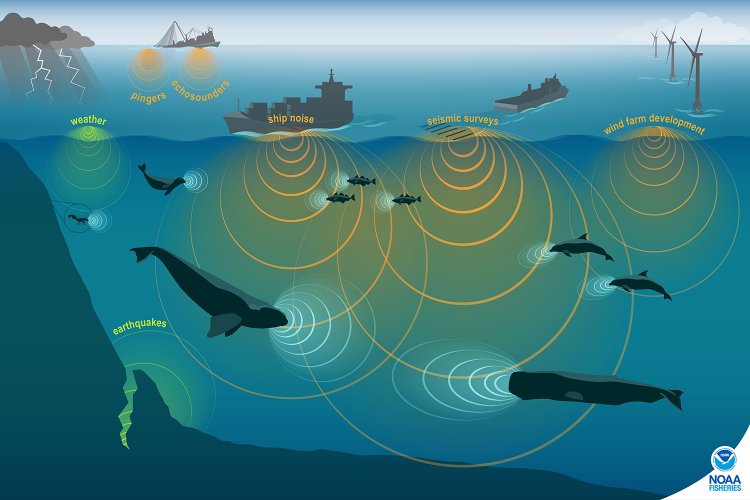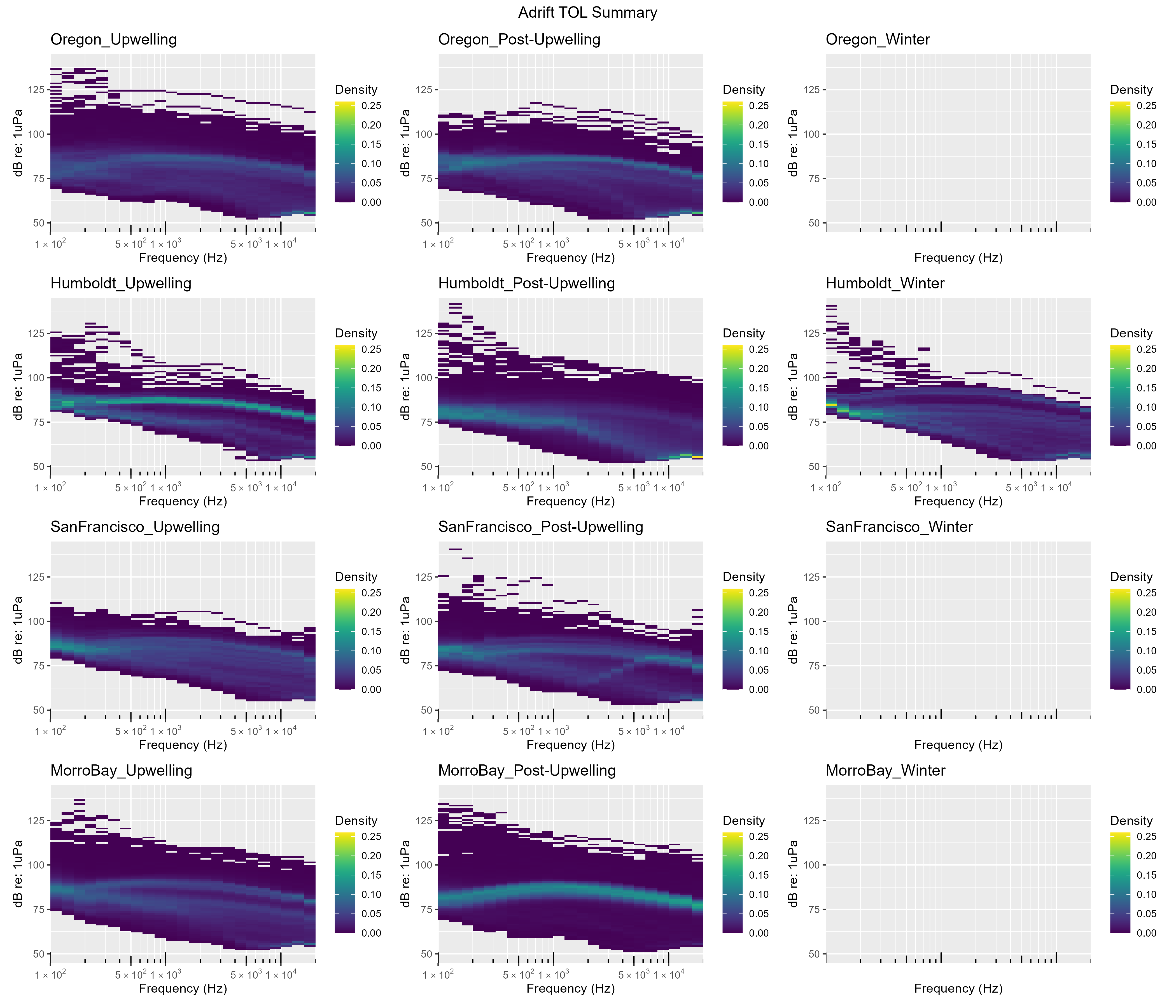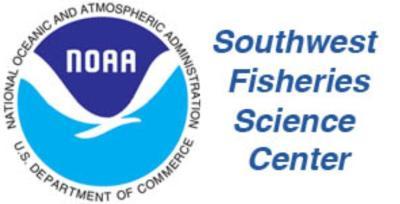Soundscape
The purpose of soundscape monitoring was to describe the ambient noise level(s) in the California Current Ecosystem (including the Morro Bay and Humboldt Wind Energy Areas) and to identify the major contributors to the soundscape. Soundscape metrics aligned with SanctSound protocols and detailed methods can be found in the Adrift Analysis Methods.

For the Adrift project, we measured soundscape metrics and identified two primary sources of noise: self-noise and ship noise. Periods of low frequency self-noise (strumming, knocking sounds resulting from movement of buoy components) were identified by scanning LTSA windows to identify start and end times of noisy data (up to the 250 Hz maximum). Noisy data with energy above the 100 Hz lower bounds of the soundscape methods were removed from analysis. Additional details are provided in Adrift Analysis Methods.
The Power Spectral Density (PSD) is the measure of the signal’s power as a function of frequency, and the PSD plots provide a visualization of the ambient noise for each region and season (Figure 2). Contributing sounds include biological sounds (marine mammals, fish, invertebrates), environmental noise (wind, rain), and anthropogenic noise (vessel noise, depth sounders, seal bombs). While Figure 6.1 includes all contributors to the soundscape, seasonal and regional differences can be informative and provide valuable pre-development information regarding the general soundscape. In general, noise levels ranged from 50 dB re 1uPa to nearly 150 dB re 1uPa, with the highest density of sound in the 75 - 100 dB range (Figure 2).

Other researchers have developed models to separate the distinct contributions of ship and wind noise to soundscapes (Erbe et al. 2021), (ZoBell, Hildebrand, and Frasier 2024). These models have been validated with empirical data and can be in close agreement in certain times and places, but validation has been very limited to small spatiotemporal scales. The data collected in offshore waters throughout the California Current by drifting recorders during PASCAL, CCES, and Adrift surveys can be used to validate models which separate wind and shipping contributions to sound levels. This will be an important next step for evaluating changes in the soundscape associated with offshore wind development areas.
